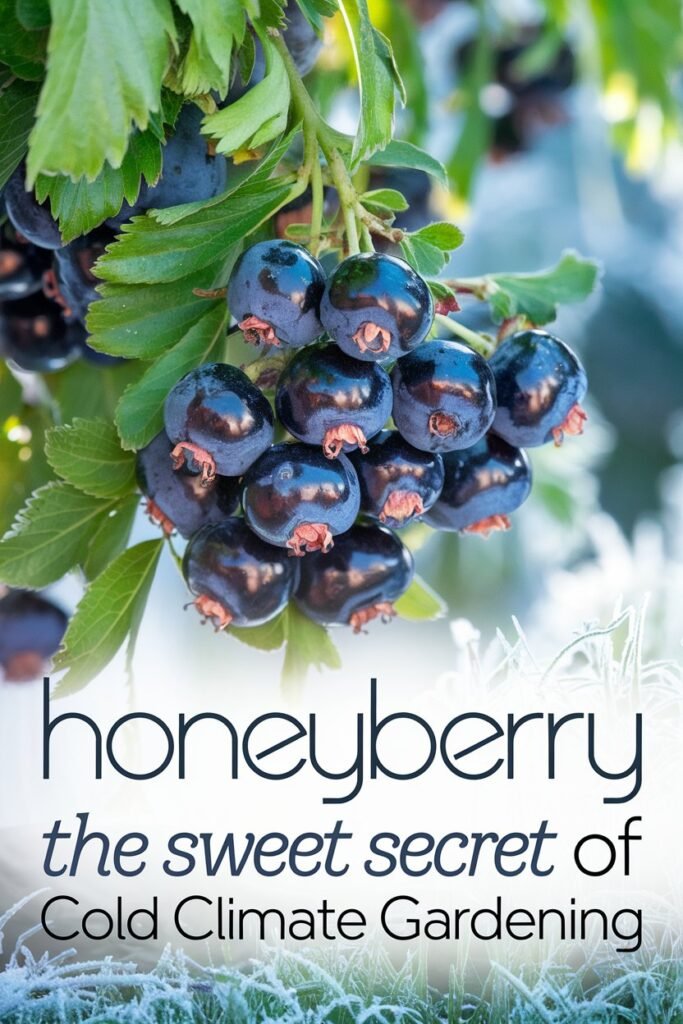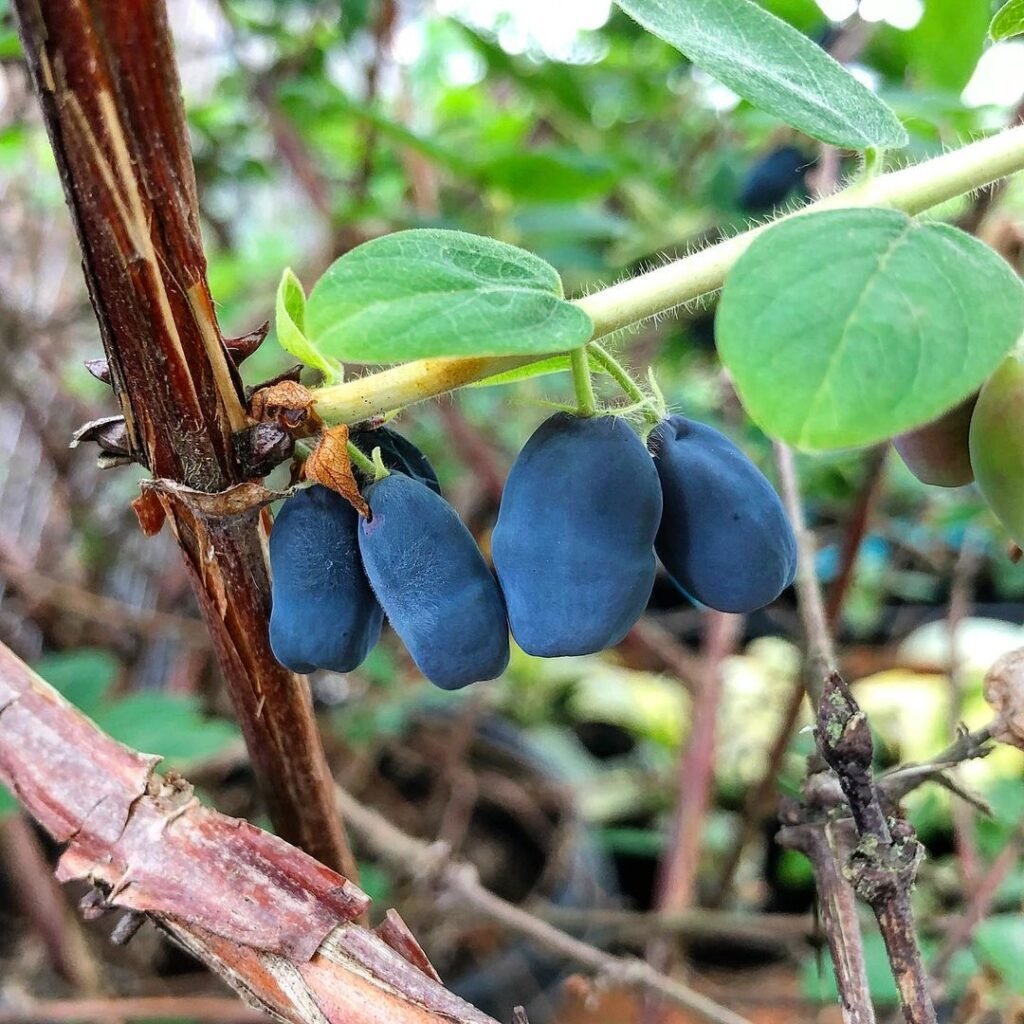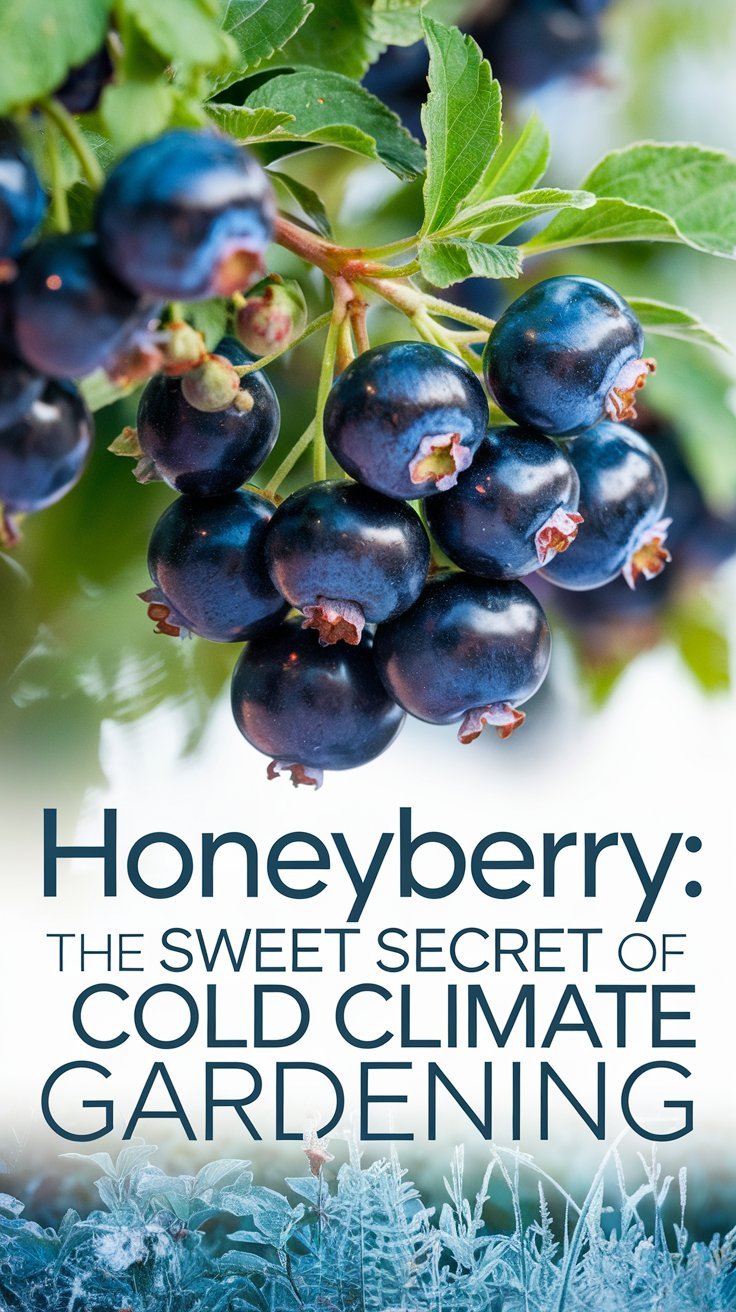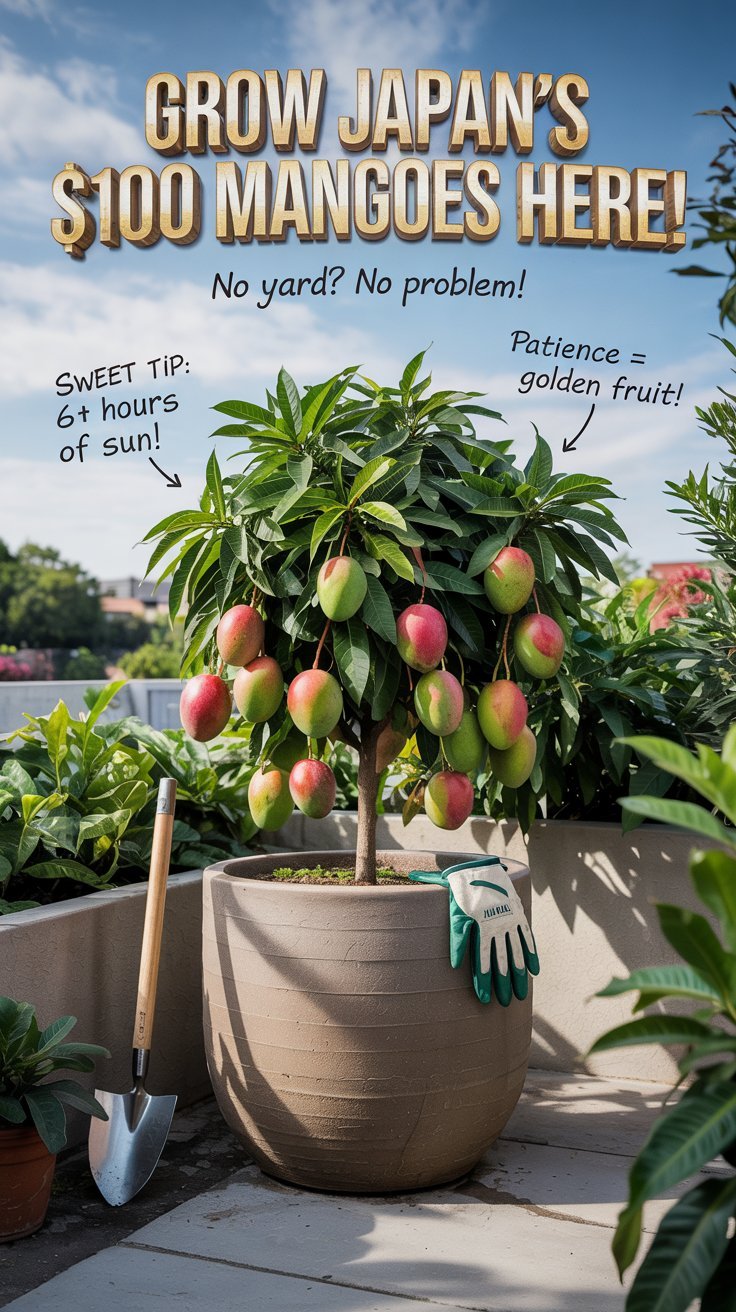Discover the delicious world of Honeyberries (Honeyberry) ! Learn how to grow, harvest, and enjoy these hardy, nutritious berries. Perfect for cold climates and small gardens.
Honeyberry, also known as haskap or blue honeysuckle, are a delightful and hardy fruit that’s gaining popularity among gardeners and health enthusiasts alike. These elongated blue berries offer a unique flavor profile and impressive cold tolerance, making them an excellent choice for gardeners in northern climates. In this comprehensive guide, we’ll explore everything you need to know about growing, harvesting, and enjoying honeyberries.

As a horticulturist specializing in cold-hardy fruits for over two decades, I’m excited to share my expertise on this remarkable berry. Let’s dive into the world of honeyberries and discover why they’re becoming a favorite in gardens across North America and Europe!
What Are Honeyberry?

Honeyberries (Lonicera caerulea) are edible fruits from a species of honeysuckle native to northern boreal forests in Asia, Europe, and North America. Here’s why they’re capturing gardeners’ attention:
- Extremely cold-hardy (surviving temperatures as low as -47°C/-55°F)
- Early ripening, often before strawberries
- Rich in antioxidants and vitamin C
- Unique flavor described as a mix of blueberry, raspberry, and elderberry
- Low maintenance and disease-resistant
Growing Honeyberry: A Step-by-Step Guide
1. Choosing the Right Location
Why It’s Important: Proper location ensures optimal growth and fruit production.
How to Do It:
- Select a spot with full sun to partial shade.
- Ensure well-draining soil with a pH between 5.5 and 7.0.
2024 Trend: Urban food forests are incorporating honeyberries as understory plants.
Pro Tip: In warmer climates, provide afternoon shade to prevent heat stress.
2. Planting Honeyberries
Why It’s Important: Proper planting sets the foundation for healthy, productive plants.
How to Do It:
- Plant in early spring or fall.
- Space plants 4-5 feet apart.
- Plant at least two different varieties for cross-pollination.
2024 Update: New compact varieties are being developed for container gardening.
Pro Tip: Add compost or well-rotted manure to the planting hole to improve soil structure.
3. Watering and Mulching
Why It’s Important: Consistent moisture and weed suppression promote healthy growth.
How to Do It:
- Water deeply and regularly, especially during fruit development.
- Apply a 2-3 inch layer of organic mulch around plants.
2024 Innovation: Smart irrigation systems with soil moisture sensors are optimizing water use in berry gardens.
Pro Tip: Use a drip irrigation system for efficient water delivery.
4. Fertilizing Honeyberries
Why It’s Important: Proper nutrition ensures vigorous growth and abundant fruit.
How to Do It:
- Apply a balanced, slow-release fertilizer in early spring.
- Side-dress with compost or aged manure annually.
2024 Research: Studies are exploring the benefits of mycorrhizal fungi inoculations for honeyberry nutrition.
Pro Tip: Avoid over-fertilizing, which can lead to excessive vegetative growth at the expense of fruit production.
5. Pruning and Training
Why It’s Important: Proper pruning improves air circulation and facilitates harvesting.
How to Do It:
- Prune in late winter or early spring before new growth begins.
- Remove dead, damaged, or crossing branches.
- Thin out older branches to promote new growth.
2024 Trend: Espalier techniques are being adapted for honeyberries in small gardens.
Pro Tip: Maintain an open center to allow sunlight penetration throughout the bush.
6. Pest and Disease Management
Why It’s Important: While generally resistant, monitoring ensures plant health.
How to Do It:
- Inspect plants regularly for signs of pests or diseases.
- Use integrated pest management techniques if issues arise.
2024 Update: New research is exploring companion planting strategies to deter pests in honeyberry orchards.
Pro Tip: Encourage beneficial insects by planting flowers nearby.
7. Harvesting Honeyberries
Why It’s Important: Proper harvesting ensures the best flavor and longest shelf life.
How to Do It:
- Harvest when berries are fully blue and slightly soft to the touch.
- Gently shake branches over a catching frame or hand-pick.
2024 Innovation: Soft robotic harvesters are being developed for commercial honeyberry farms.
Pro Tip: Taste test berries from each variety, as ripening times may vary.
Enjoying and Preserving Honeyberries
Honeyberries are versatile in the kitchen. Here are some ways to enjoy your harvest:
- Fresh eating
- Baking (pies, muffins, cookies)
- Jams and jellies
- Smoothies and juices
- Wine and liqueur making
2024 Culinary Trend: Chefs are incorporating honeyberries into savory dishes, pairing them with game meats and aged cheeses.
Preservation Tip: Freeze berries on a tray before transferring to freezer bags for easy portioning.
Health Benefits of Honeyberries
Honeyberries aren’t just delicious; they’re also nutritional powerhouses:
- High in antioxidants (especially anthocyanins)
- Rich in vitamin C
- Good source of fiber
- Contains potassium and magnesium
2024 Research Focus: Studies are investigating the potential anti-inflammatory properties of honeyberry compounds.
Best Honeyberry Varieties for 2024
- ‘Aurora’ – Large, sweet berries with high yield
- ‘Boreal Beast’ – Very hardy with firm, flavorful fruit
- ‘Indigo Gem’ – Early ripening with excellent flavor
- ‘Blue Moon’ – Compact plant ideal for containers
- ‘Tundra’ – Large, sweet berries with a tangy finish
2024 Breeding Goals: Developing varieties with extended harvest periods and improved shelf life.
Embrace the Honeyberry Revolution
Honeyberries offer a unique opportunity for gardeners to expand their fruit repertoire, especially in colder climates. With their easy care, early harvest, and delightful flavor, they’re poised to become a staple in home gardens and orchards.
Remember, patience is key with honeyberries. While they start producing fruit within 2-3 years, they reach full production after 5-7 years. The wait is well worth it for these delicious and nutritious berries!
For more information on growing unusual fruits and sustainable gardening practices, visit resources like the North American Fruit Explorers or your local agricultural extension office. Happy planting, and may your honeyberry harvests be bountiful!
For more gardening tips and plant care guides, visit usagardenhub.com.





2 Comments on “Honeyberry : The Sweet Secret of Cold Climate Gardening”